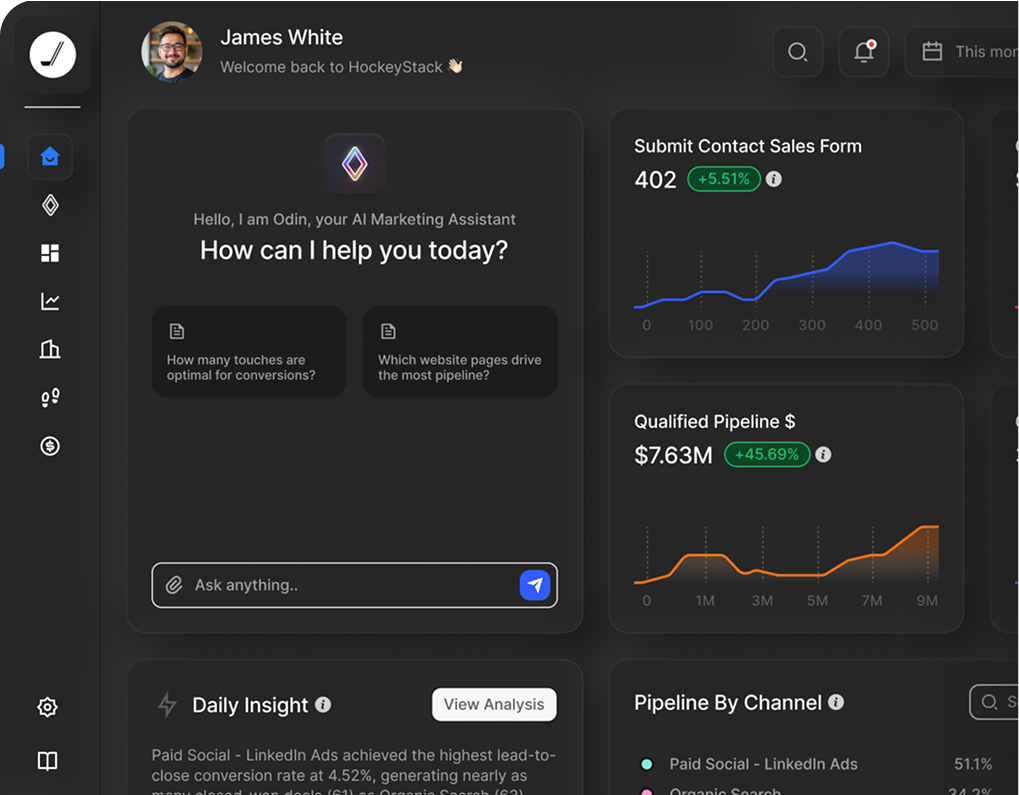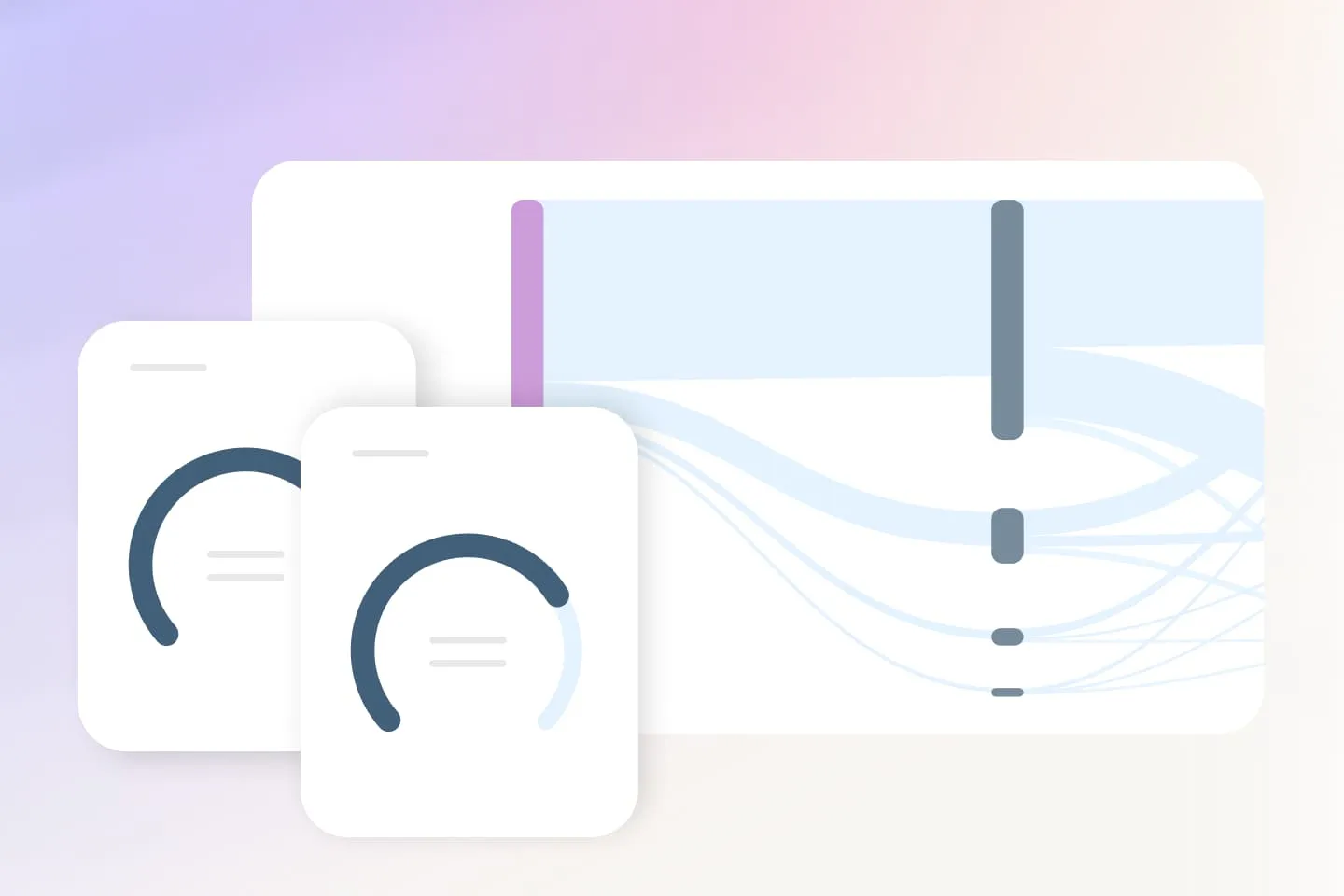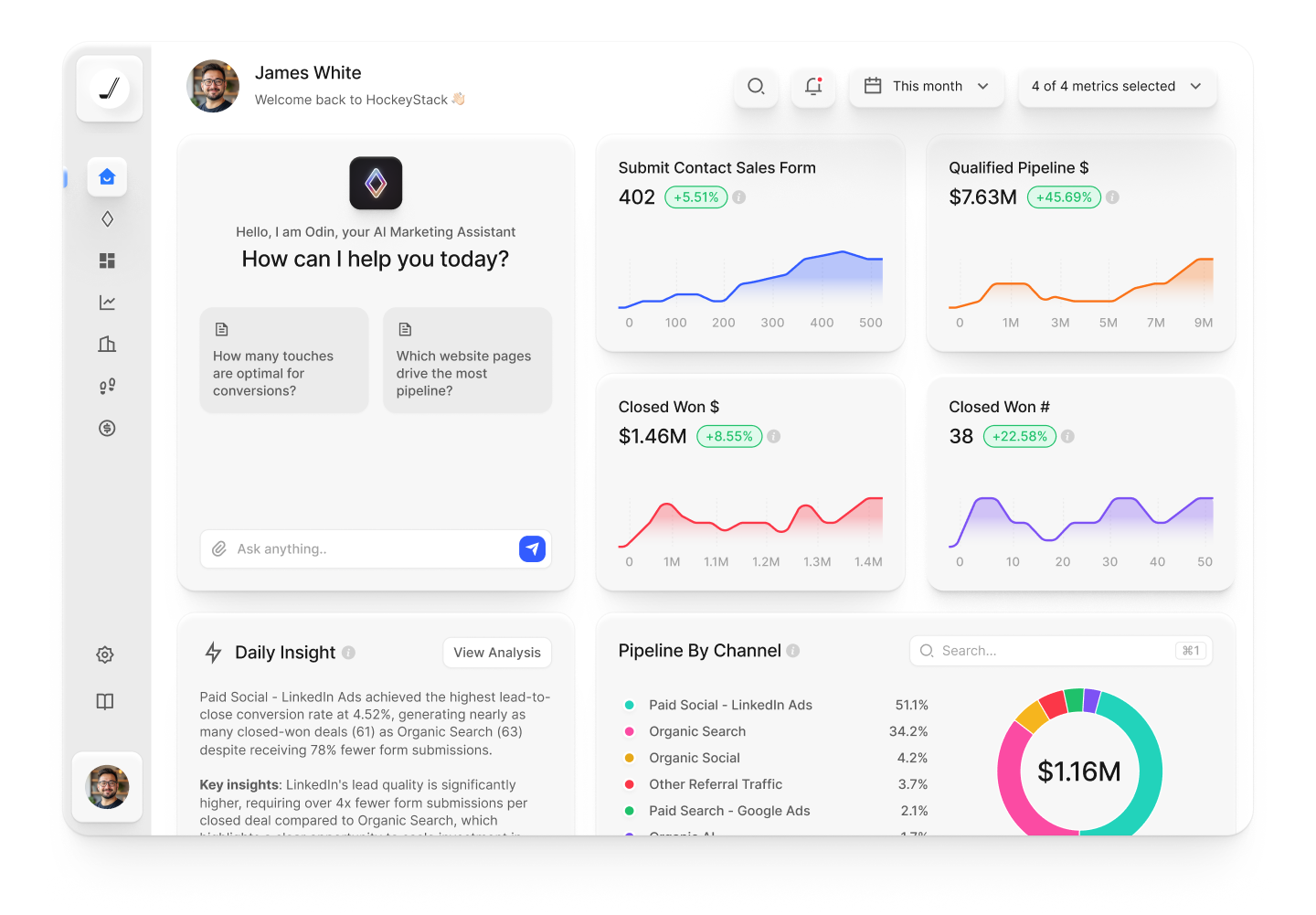Real-Time GTM Identity Intelligence in 2025

Real-Time GTM Identity Intelligence in 2025

Your sales team contacts a prospect three days after they visited your pricing page, only to discover they've already signed with a competitor. Marketing attributes a closed deal to a single webinar, missing the fifteen other touchpoints across five buying committee members that actually influenced the decision. These gaps exist because most GTM teams operate with incomplete, outdated identity data that obscures who's really buying and when they're ready to move.
Today’s GTM tools give teams plenty of data but rarely a complete picture. Visibility often stops at clicks and forms, leaving gaps in understanding who is engaging, how buying committees interact, and what truly drives revenue.
Real time Identity Intelligence fills that gap by instantly uncovering anonymous visitors, mapping decision makers, and connecting every touchpoint to revenue as engagement happens. This guide explains how the technology works, what data powers full visibility, how to evaluate platforms, and how to implement identity intelligence that accelerates pipeline and increases conversion rates.
What Real-Time Identity Intelligence Means for Modern GTM
Real-time identity intelligence identifies anonymous website visitors, tracks buyer intent signals across channels, and maps entire decision-making units within target accounts as they engage with your brand. This technology moves beyond traditional lead scoring by revealing the full buying committee, not just a single contact, and connecting every touchpoint to actual revenue outcomes. Instead of waiting for form fills or relying on outdated batch updates, GTM teams gain immediate visibility into who's researching solutions, which stakeholders are involved, and when accounts enter active buying cycles.
The shift here is from reactive to proactive engagement. Traditional systems capture only known leads after they've identified themselves, missing the critical research phase where buying committees form opinions and narrow their shortlists. Real-time identity intelligence captures anonymous browsing behavior, connects it to specific companies and individuals, and reveals engagement patterns before prospects ever reach out.
The technology combines three core capabilities:
- Anonymous visitor identification: Revealing company names and individual contact details from IP addresses and device fingerprints before any form submission occurs
- Cross-platform stitching: Using identity resolution and deduplication to connect touchpoints across web sessions, email opens, ad clicks, content downloads, and product usage, creating unified timelines that clearly show how engagement turns into pipeline and revenue.
- Buying committee mapping: Understanding relationships, hierarchies, and influence patterns within target accounts to identify all decision-makers and their roles
Why Speed and Accuracy Is Compromised With Batch Enrichment
Most legacy systems update contact and account data once daily, or even weekly, through scheduled batch processes. By the time your sales team sees that a high-intent prospect visited your pricing page, that prospect may have already moved on to a competitor or gone cold. Real-time processing eliminates this lag entirely, making data available within seconds of the actual engagement.
Speed matters because buying committees move fast. A VP might research solutions during a Tuesday morning, discuss options with their team by Wednesday, and shortlist vendors by Thursday. If your system doesn't surface that VP's activity until Friday's batch update runs, you've missed the entire decision window.
Accuracy improves alongside speed because real-time systems can validate and cross-reference data points as they arrive. When someone visits your site from a known company IP, then opens an email from a verified domain, and later engages with your content on LinkedIn, the system immediately connects these signals to build confidence in the identity match. Batch systems lack this immediacy and often produce lower-quality matches because they can't leverage temporal proximity to validate connections.
Here's what real-time processing enables:
- Instant lead routing: High-intent prospects reach the right sales rep within minutes, not hours or days
- Dynamic personalization: Website content, email messaging, and ad creative adapt based on current behavior and account context
- Opportunity acceleration: Buying signals trigger automated workflows that move deals forward before momentum fades
Core Data Sources Needed for Full Buying-Committee Visibility
Complete identity intelligence requires pulling data from every system where prospects and customers interact with your business. Fragmented data creates blind spots that hide stakeholders, misattribute influence, and obscure the true buyer journey.
CRM and Custom Objects
Your CRM holds the official record of accounts, contacts, and opportunities, but it's rarely complete or clean. Duplicate records, outdated job titles, and missing relationships are common problems that distort identity resolution. For enterprise organizations, custom objects in Salesforce—like partner relationships, product usage records, or support tickets—add critical context that standard contact and account objects miss.
Real-time identity platforms normalize this messy data automatically, resolving duplicates and filling gaps without requiring manual cleanup or forced merges that break existing workflows.
Marketing Automation and Ad Platforms
Marketing automation platforms like Marketo, HubSpot, and Eloqua capture early-stage engagement through email opens, content downloads, and webinar registrations. Ad platforms like LinkedIn, Google Ads, and programmatic networks reveal which accounts are seeing and clicking your campaigns. Together, these sources provide the first signals that a buying committee has entered research mode.
The challenge is that marketing systems often track anonymous sessions separately from known contacts, creating disconnected data trails. Identity intelligence stitches these together, connecting anonymous ad clicks to known email engagement to website visits under a single account and person profile.
Web and Anonymous Visitor Data
Website behavior is one of the richest sources of intent data, yet most organizations only capture a fraction of it. Anonymous visitors—people who haven't converted and volunteered their information; represent 95% or more of site traffic. Real-time identity resolution uses IP addresses, device fingerprints, and reverse-IP lookups to identify companies and, increasingly, individual visitors even before they convert.
This pre-conversion visibility is what separates modern identity intelligence from legacy lead capture. You see who's researching, which pages they care about, and how deep their interest runs before they ever identify themselves.
Product Usage and Customer Success Signals
For companies with product-led growth motions or existing customer bases, product telemetry and customer health scores reveal expansion opportunities and at-risk accounts. Usage patterns show which features drive value, which stakeholders are active, and when engagement drops off.
Customer success interactions—support tickets, health scores, renewal conversations—add another layer of context about account satisfaction and expansion readiness. These signals are especially valuable for identifying buying committee members who weren't involved in the initial purchase but have since become power users or champions.
Third-Party Intent and Offline Events
External intent data from platforms like Bombora or G2 shows when accounts are researching your category across the broader web. Conference attendance, webinar participation, and partner ecosystem interactions provide offline touchpoints that complement digital engagement.
The key is integrating these external signals with your first-party data so you can see the complete picture: internal research, external validation, and peer influence all in one timeline.
How Real-Time Identity Resolution Works Under the Hood
The technical process follows a predictable sequence that transforms raw data into actionable intelligence. While the details can get complex, the core workflow is straightforward.
1. Ingestion and Normalization
Raw data arrives from dozens of sources in different formats, schemas, and update frequencies. The first step is cleaning and standardizing this data—converting timestamps to a common format, normalizing company names, and mapping fields to a unified schema. This normalization happens continuously as new data streams in, not in scheduled batches.
2. Fingerprinting and Matching Algorithms
The platform then applies matching algorithms to identify the same person or account across different touchpoints. Deterministic matching uses exact identifiers like email addresses or CRM IDs. Probabilistic matching uses patterns—same company name, similar job title, overlapping IP address—to infer connections with a confidence score.
The best systems combine both methods to maximize coverage while maintaining accuracy.
3. Account-Person Graph Creation
Once individual identities are matched, the system builds a graph that connects people to accounts and maps relationships within buying committees. This graph captures hierarchies (who reports to whom), influence patterns (who engages most actively), and role-based connections (procurement, technical evaluators, economic buyers).
The result is a dynamic map of the buying committee that updates as new members engage.
4. Continuous Streaming Updates
Instead of rebuilding the identity graph periodically, real-time systems process updates as they arrive. When someone visits your pricing page, the system immediately checks for existing identity matches, updates engagement scores, and triggers any relevant workflows—all within seconds.
5. Analytics and Orchestration Layer
The final layer turns identity data into action. Dashboards surface high-intent accounts, alerts notify sales reps of buying signals, and automated workflows trigger personalized outreach. This orchestration layer connects identity intelligence to your existing GTM tools—CRM, marketing automation, sales engagement platforms—so insights flow directly into daily workflows without requiring manual exports or context switching.
Evaluation Criteria for Choosing a GTM Identity Platform
Evaluating solutions requires looking beyond marketing claims to examine technical architecture, data quality, and total cost of ownership. Here's a framework for comparing options.
1. Latency and Scalability Benchmarks
True real time identity resolution is more than frequent updates. A fifteen minute delay can mean acting on stale data and missing when a key account visits your site, engages with content, or signals intent.
Platforms built on columnar databases like ClickHouse process data in seconds, not minutes, maintaining sub second query latency even under heavy load. That speed allows billions of events to be resolved, deduplicated, and connected instantly, keeping buyer timelines and engagement insights continuously up to date.
2. Coverage of Anonymous and Pre-Conversion Touchpoints
The percentage of website traffic you can identify before form fills directly impacts pipeline generation. Basic solutions might identify 20-30% of anonymous visitors at the company level. Advanced platforms reach 40-60% company identification and increasingly resolve individual visitors using device fingerprinting, reverse-IP databases, and cross-device tracking.
Pre-conversion coverage is especially critical for high-ACV B2B sales where buying committees research extensively before reaching out.
3. Flexibility of Attribution and Segmentation Logic
Your business logic—how you define funnel stages, group channels, categorize touchpoints, and weight attribution—is unique. Platforms that force predefined models or require engineering work to change rules create bottlenecks.
The best platforms separate data storage from business logic, so when you change how you define a qualified lead or regroup your channels, every dashboard and report updates instantly without reprocessing historical data.
4. Total Cost of Ownership and Predictable Pricing
Seat-based pricing sounds simple but gets expensive fast when you give access to sales, marketing, operations, and executive teams. Event-based pricing can spiral unpredictably as traffic grows.
Implementation and maintenance costs matter too. Platforms that require extensive custom development, ongoing data engineering support, or frequent schema migrations have hidden costs that dwarf the license fee.
5. AI-Driven Insights and Workflow Integration
Static dashboards force teams to hunt for insights and interpret what actions to take. AI-powered platforms surface recommendations automatically—which accounts to prioritize, which deals deserve attention, which channels to invest in—and explain the reasoning behind each suggestion.
However, AI only adds value if it's built on clean, governed data and produces explainable, trustworthy outputs. [See how HockeyStack's AI analyst Odin turns identity data into actionable GTM recommendations](https://www.hockeystack.com/contact-sales).
Implementation Roadmap From Pilot to Revenue Impact
Deploying identity intelligence across GTM teams requires a structured approach that balances speed with thoroughness. Rushing into full-scale rollout without validating data quality creates trust issues that undermine adoption. Moving too slowly delays value and loses organizational momentum.
1. Define Success Metrics and Governance
Start by aligning stakeholders on what success looks like and establishing data governance policies before any implementation begins. Decide which metrics matter most lead-to-opportunity conversion rates, pipeline velocity, sales cycle length, or channel ROI—and baseline current performance so you can measure improvement.
2. Integrate Core Data Sources
Prioritize the highest-value data connections first rather than trying to integrate everything at once. Typically, this means starting with CRM, marketing automation, and website tracking, then adding ad platforms, product usage, and external intent data.
Focus on data quality over quantity, clean, reliable data from three sources beats messy data from ten.
3. Validate Identity Graph Accuracy
Before rolling out to sales teams, test the identity resolution quality with a sample of known accounts and contacts. Check match rates, review buying committee maps for accuracy, and verify that touchpoint attribution aligns with your understanding of how deals actually progressed.
4. Activate Routing and Alerting Workflows
Once data quality is validated, configure automated processes for lead assignment, opportunity alerts, and follow-up sequences. Start with simple workflows—like routing high-intent accounts to sales reps or alerting account executives when buying committee members visit your site—before building complex multi-step automation.
5. Iterate Attribution and Budget Decisions
Use identity insights to test hypotheses about channel effectiveness and optimize your GTM mix. You might discover that webinars influence pipeline more than you realized, or that certain content assets accelerate deals in specific segments.
Measuring Success With Attribution, Pipeline and ROI
Identity intelligence creates value across multiple dimensions, from operational efficiency to strategic decision-making. Tracking the right metrics helps you quantify impact and identify areas for continued optimization.
Leading Indicators
Early signals show whether the system is working technically and gaining adoption before revenue impact appears. Data coverage metrics—what percentage of accounts have complete buying committee maps, how many touchpoints you're capturing per opportunity—indicate whether you're seeing the full picture. Match rate accuracy tells you if identity resolution is working correctly.
Workflow adoption rates show whether sales and marketing teams are actually using the insights in their daily work. Leading indicators typically improve within the first 30-60 days and predict later revenue outcomes.
Lagging Revenue Metrics
Pipeline velocity measures how quickly opportunities move through stages after you implement identity intelligence. Conversion rates from marketing qualified lead to sales qualified opportunity typically improve as routing becomes more accurate and personalization more relevant.
Deal sizes often increase when teams identify and engage the full buying committee instead of just a single contact. Revenue metrics usually show measurable change within one to two quarters, depending on your typical sales cycle length.
Continuous Optimization Loops
The real value comes from using performance data to refine your approach over time. Attribution insights reveal which channels and content assets actually create pipeline, letting you shift budget toward high-performing investments. Buying committee analysis shows which roles and engagement patterns predict closed-won deals, informing targeting and messaging strategies.
Governance, Privacy and Security Essentials
Handling identity data at scale requires robust governance frameworks and security controls. Enterprise buyers rightly scrutinize how platforms protect sensitive information and comply with privacy regulations.
Data Residency and Encryption
Understanding where your data is stored and how it's protected is fundamental. Leading platforms offer data residency options that let you keep information in specific geographic regions to comply with regulations like GDPR. All data transmissions occur over encrypted connections, and data at rest is encrypted using industry-standard protocols.
Access Controls and Audit Trails
Role-based access controls let you define who can view, edit, or export different types of data. Marketing might see campaign performance and account engagement, while sales accesses individual contact details and buying signals.
Audit trails track every action—who accessed what data, when, and what they did with it—creating accountability and enabling compliance reporting.
Responsible AI and Compliance
AI features that process personal data require additional safeguards. Transparent, explainable outputs let you understand why the system made specific recommendations, which is essential for building trust and meeting regulatory requirements.
Customer data is never used to train global models—your information stays yours and doesn't improve competitors' insights.
Next Steps to Operationalize Identity Intelligence Across Teams
Implementing real-time identity intelligence transforms how GTM teams understand buyers, prioritize accounts, and allocate resources. Organizations seeing the fastest impact start with clear objectives, validate data quality early, and expand systematically as teams build confidence in the insights.
Here's how to begin:
- Audit current data sources: Map out every system where prospect and customer data lives, identify gaps in your current identity coverage, and prioritize which integrations will unlock the most value
- Evaluate platform requirements: Assess your technical infrastructure, integration complexity, and team capabilities to understand what type of solution fits your environment and resources
HockeyStack's Atlas data foundation provides the unified identity intelligence layer that enterprise GTM teams use to see the complete buyer journey, understand buying committee dynamics, and optimize channel investments based on actual revenue impact. [Book a demo](https://www.hockeystack.com/contact-sales) to see how real-time identity resolution works with your existing GTM stack.


Ready to See HockeyStack in Action?
HockeyStack turns all of your online and offline GTM data into visual buyer journeys and dashboards, AI-powered recommendations, and the industry’s best-performing account and lead scoring.




